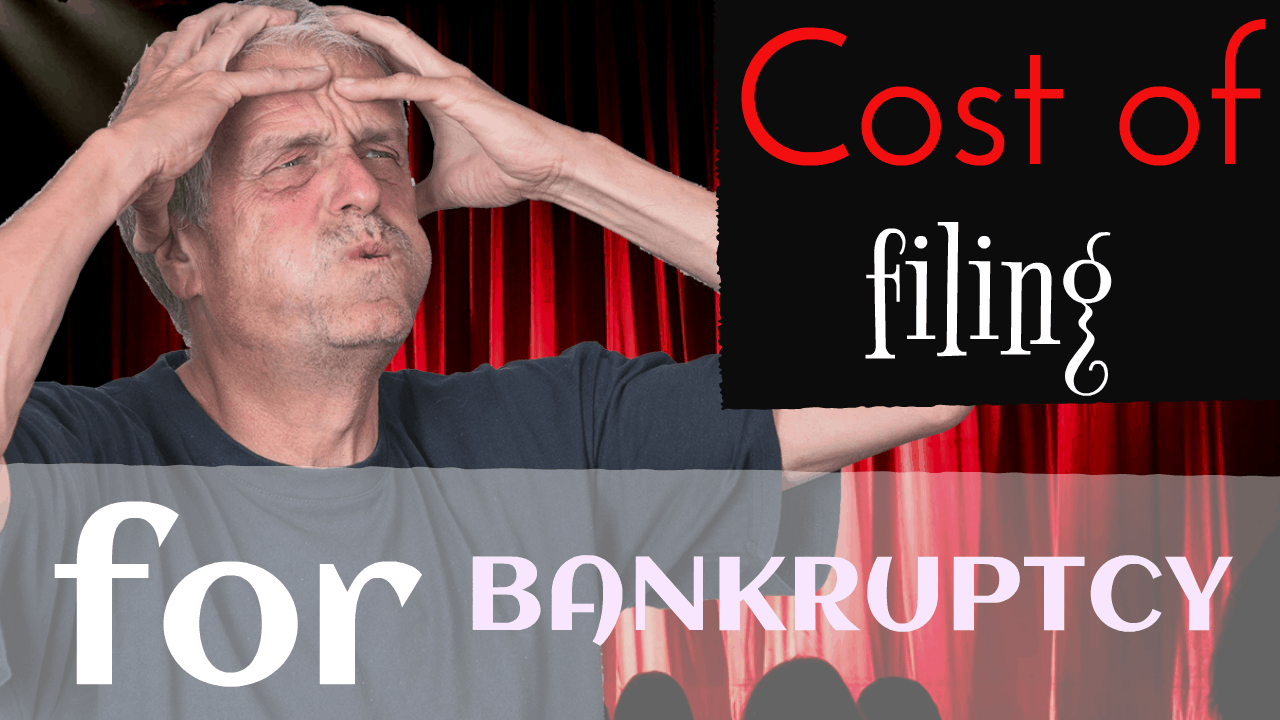[monkeytools msnip=”https://monkeyplayr.com/playr.php?u=5173&p=20577″]
If you enjoyed this cost of filing for bankruptcy video and would like a copy of our free e-Book “Cost of Claiming Bankruptcy in Canada” please subscribe to Brandon’s blog by clicking on this link – CLICK HERE
Introduction
The cost of filing for bankruptcy is something you will need to consider when you are considering filing. How much you will have to pay to go bankrupt depends on a number of factors, including:
- your monthly income;
- what assets you own;
- the size of your family; and
- whether you have been bankrupt before.
We strongly recommend that you contact a Licensed Insolvency Trustee to arrange for a free first consultation; they will check your situation and calculate the cost for you in your situation.
Your base cost
In most cases, you will have to make payments to the Trustee to contribute to your estate each month to cover various filing fees and other administrative costs. The minimum period for bankruptcy is nine months, so you will be making these payments for at least a nine-month period. This is the base cost of filing.
Surplus income
You are required to pay part of your surplus income into your estate each month. Surplus income is defined by the government, and if you and your family earn over a certain amount each month, you pay part of your earnings over that limit. The limit is essentially the poverty line.
The surplus income calculation is reasonably complicated, so we suggest you bring your recent pay stubs to your meeting with your trustee so that they can estimate the number of surplus income payments you will make while bankrupt. If you have surplus income, your bankruptcy will be extended for an extra year.
If you would like a preliminary idea of what your surplus income payments would be, review our blog What Can I Deduct For Surplus Income In Bankruptcy?
Non-exempt assets
Another cost of filing for bankruptcy is that you will lose all of your non-exempt assets.
Tax refunds
You will lose any tax refunds and HST credits you would otherwise receive during the bankruptcy period. This is a further cost of filing for bankruptcy.
Windfalls
Finally, you will lose any windfalls you receive or become entitled to during the bankruptcy period. For example, if you inherit money while bankrupt, or win the lottery, that money must be surrendered to the trustee.
The minimum bankruptcy period in Canada is nine months, but if you have surplus income, or if you were before bankrupt, your bankruptcy will last longer before you are able to apply for your discharge from bankruptcy.
What should you do with too much debt?
The amount you will pay while bankrupt will depend on your monthly take-home pay, your family size, and your assets. Given this information, you may first wish to attempt to avoid bankruptcy by looking at one of the bankruptcy alternatives.
To show how much it will cost to go bankrupt in Ontario, and to look at ways of avoiding bankruptcy, contact Ira Smith Trustee & Receiver Inc. today. Our team of professional trustees can help you manage your financial crisis and get you back on your feet Starting Over, Starting Now.

